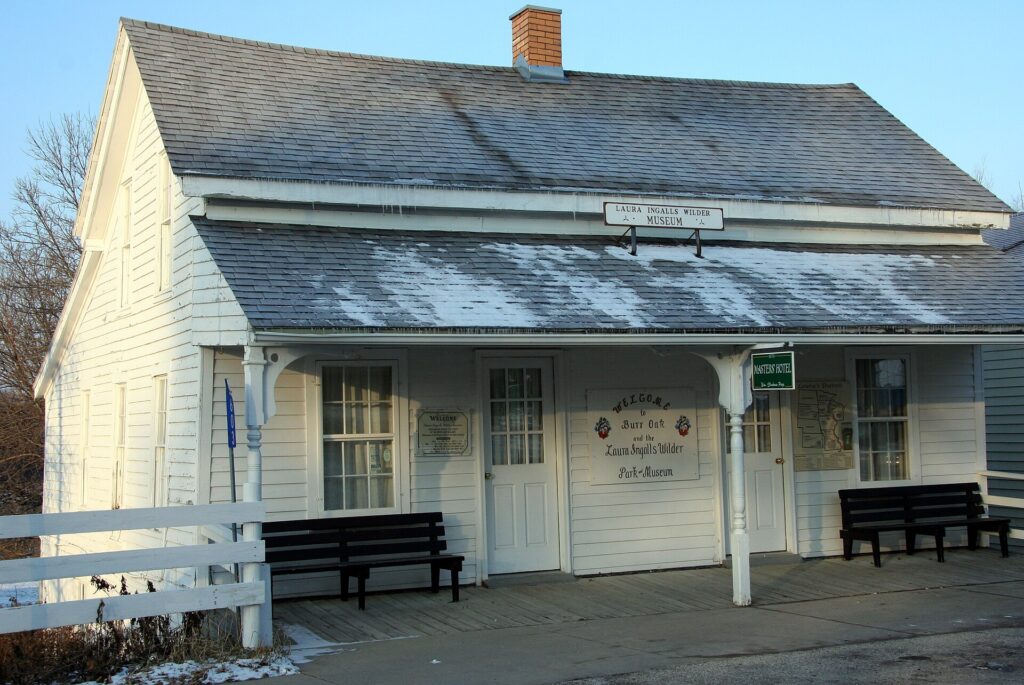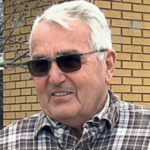Literature
The least-known Laura Ingalls Wilder site in America
The tiny town of Burr Oak, Iowa, (population: 170) is easy to miss. One main street, a few small subdivisions, and a graveyard nearly as big as the land of the living, and you’re back on the road again. It has one claim to fame: for a year, between 1876 and 1877, Laura Ingalls lived here with her family. Unlike the many Ingalls sites strung out across the American Midwest, Burr Oak does not have immediate name recognition—but it is the missing chapter between On the Banks of Plum Creek (Walnut Grove, Minnesota) and By the Shores of Silver Lake (De Smet, South Dakota).
In 1876, the Masters Hotel was owned by William Steadman, a friend of the Ingallses. After two years of Rocky Mountain locust plagues had wiped out their crops, Steadman offered Pa the management of the small hotel. The hotel, built in 1851, still stands—the only childhood home of Laura Ingalls Wilder that remains on its original site. The white frame building is still in good shape after over a century-and-a-half. Only the roof sags a little. Our family headed to the Burr Oak Savings Bank just down the street to book a tour.
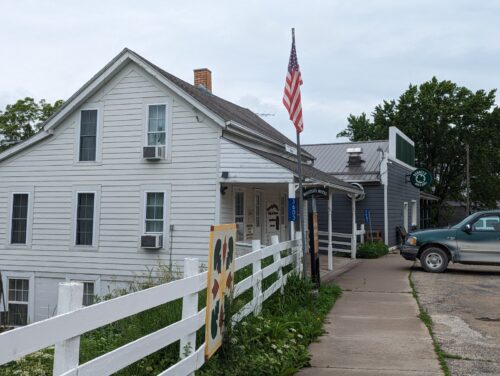
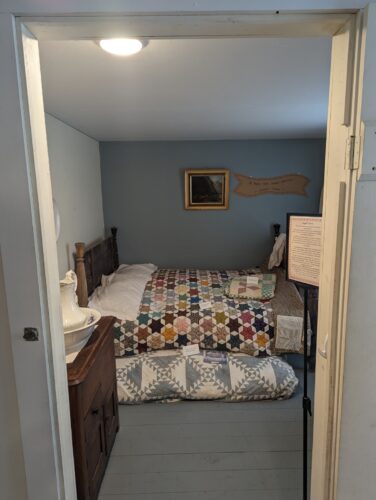
The bank is now a Little House gift shop; the Masters Hotel has been turned into a museum (it was purchased by Laura Ingalls Wilder Park, Inc. in 1973). It was hot inside; it must have been much worse when the Ingalls family lived there. The Steadmans—all five of them—stayed in one bedroom. The Ingallses—Pa, Ma, Mary, Laura, and Carrie—all likely slept in a single bedroom, just below the tavern, which would have been extremely loud. A little boy, Freddie, had died in August 1876 either shortly before or during the move to Burr Oak; Grace was born there on May 23, 1877.
My children, who are under the impression that the Ingallses spent their lives going on enviable extended field trips, were horrified by a display listing the various chores expected of children in the 1870s. For girls: “Help with food preservation, help prepare meals, haul water, laundry, wash dishes, set the table, make beds, collect ashes for soap making, help plant crops and gardens, gather eggs, churn butter.” For boys: “Feed & water livestock, pick fruit and berries, weed gardens, sew, collect firewood, help clean fish, birds, and game, take care of young siblings, help with milking, remove stones from fields, help harvest, beat rugs.”
For children who believe that cleaning up their own toys is a form of cruel slavery, this lesson from the days of yore was briefly absorbed and promptly rejected. They were much more enthused by the opportunity to clang “Laura’s Bell,” the bell that “called the Ingalls to the Burr Oak Congregational Church,” in the backyard.
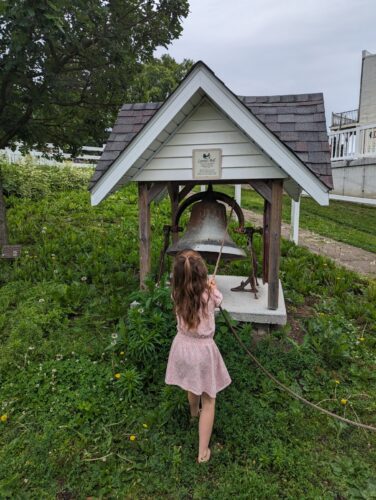
Later in our road trip, we stopped in Pepin, Winsconsin, the site of the “Little House in the Big Woods.” Since 1996, the Laura Ingalls Wilder Museum has been the official starting point of the Laura Ingalls Wilder History Highway, which links the Wilder sites across America. It is a one-story building with a General Store-style front, featuring a gift shop and a wide range of interesting exhibits about both the Ingallses and the history of the region. The kids were particularly taken with a display featuring Ma accidentally whacking a black bear, thinking it was their stubborn cow.
Twenty minutes down some winding country backroads flanked by split-rail fences is the Little House Wayside, a log cabin built on the site where Laura Ingalls Wilder was born—the “Little House in the Big Woods.” The memorial plaque, erected in 1978, reads: “Laura was born here on February 7, 1867. Late in 1868 or in the spring of 1869, the Ingalls family left Wisconsin and traveled by covered wagon to Kansas. They found Kansas to be Indian country, so shortly after Carrie was born in August of 1870, Charles Ingalls brought his family back to the little house near Pepin. In 1871 Mary and Laura enrolled in the Barry Corner School near here. They sold this farm in 1873 and moved to Minnesota.”
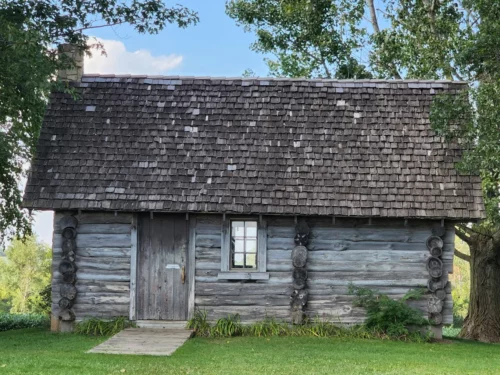
Now, it is a beautiful, snug little cabin built in a grassy clearing surrounded by massive trees with perfect branches for climbing, cornfields, and beyond them, forests. As the plaque indicates, the stories Laura tells in Little House in the Big Woods actually occurred after those in Little House in the Prairie; she scrambled the chronology to make the chaotic narrative of their frontier lives unfold a little easier. Pa only stopped for good in De Smet because Ma refused to go further; if he’d had his way, the family would have hit the Oregon Trail.
The day after the 4th of July, we were driving toward home across the Midwest. The evening was humid, and as the sun sank and the gloaming descended, fireworks rose above the farms and fields, leftovers from the day before. Across the rippling seas of corn, constellations of fireflies appeared, winking and glittering, making the night seem enchanted. It reminded me of the words Laura Ingalls Wilder put in the mouth of her father-in-law, talking to his young son Almanzo at the Independence Day celebrations in Mansfield, New York:
Spaniards were soldiers that only wanted gold. The French were fur traders, wanting to make quick money. And England was busy fighting wars. But we were farmers, son; we wanted the land. It was farmers that went over the mountains, and cleared the land, and settled it, and farmed it, and hung on to their farms. It’s the biggest country in the world, and it was farmers who took all that country and made it America. Don’t you ever forget that.


